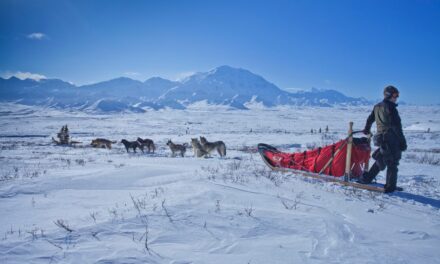The Alaska Division of Geological & Geophysical Surveys states that Alaska has the most occurrences of earthquakes in the United States. There is a particular area in Alaska that hosts the most earthquakes and there is a good reason that happens.
The area of Alaska that has the most earthquakes is the southern part of the state. Approximately 1,000 earthquakes occur there each month. It was the location of the largest earthquake in U.S. history.
The frequent earthquake activity in southern Alaska is caused by naturally occurring events. Read on to learn more about the frequent earthquake phenomenon that occurs in lower Alaska.
Why the Lower Part of Alaska has the Most Earthquakes
The lower Alaskan area consists of specific natural environmental structures called tectonic plates that shift over time. A U.S. Geological Survey Fact Sheet states that tectonic plates create the outer shell area of the earth. In Alaska, there exist two tectonic plates: the Pacific Plate and the North American Plate. Britannica states the Pacific Plate is an oceanic plate or a thin crust layer while the North American Plate is a continental plate, which is thicker. The movement of the thin Pacific plate towards the thicker North American plate (about 2 inches per year) is what causes so many earthquakes in the lower Alaskan area.
The Subduction of the Pacific Plate
When a tectonic plate moves it may slide beneath (subducts) the plate next to it for a smooth movement with little interference.
However, in southern Alaska, the Pacific plate does not subduct smoothly. According to a U.S. Geological Survey Fact Sheet, the Pacific plate has an extra element on top of it called the Yakutat block or the YAK. When the Pacific tectonic plate moves with its YAK it does not subduct very well under the North American plate.
The Wrangell Subplate
The Pacific plate with its YAK causes a “wrinkle” in the North American plate, known as the Wrangell Subplate. The irregularity on the Pacific plate causes this area of the North American plate to move counterclockwise. This rotating movement in lower Alaska causes tension between the plates, and thus earthquakes occur.
The Denali Fault Line
NASA’s Earth Observatory says the Denali Fault line is located along the border of where the Pacific Plate and the North American Plate meet (southern Alaska). This Denali Fault line contains glacial material that sometimes settles, melts, or erodes, causing the earth to quake in those areas.
Aftershocks Add to Number of Earthquakes
Britannica states that aftershocks are mini earthquakes that occur after the main earthquake. Aftershocks are the result of the change in the rock formation from the main earthquake and more settling occurs afterward. According to the University of Fairbanks, aftershocks from a large earthquake can occur years after the initial quake. These aftershocks, although lower in magnitude, add to the total number of earthquakes that occur in lower Alaska.
Earthquake Swarms Caused by Gothermal Changes
According to the United States Geology Survey, earthquake swarms are strings of earthquakes not associated with a main large earthquake like aftershock events. Instead, earthquake swarms are primarily caused by geothermal changes within the landmass they occur. Earthquake swarms can occur for up to several months at a time in southern Alaska.
The Most Famous South Alaskan Earthquake
A noteworthy earthquake that occurred in southern Alaska was the Good Friday Earthquake, also knowns as the Great Alaskan Earthquake of 1964, which reached a magnitude of 9.2.
As documented on the U.S. Geology Survey site, the Good Friday Earthquake was recorded to be the largest earthquake in U.S. earthquake history and was the second-largest earthquake on record in the world.
Recent Significant Earthquakes in Southern Alaska
The Alaska Earthquake Center maintained by the University of Fairbanks regularly records seismic activity in Alaska. Here are some significant seismic events that occurred in the southern area of Alaska:
- In 2018, Alaska made a new state record of having 55,000 earthquakes that year
- Chignik Earthquake reached a magnitude of 8.2 on July 28th, 2021
- Simeonof Earthquake reached a magnitude of 7.8 and had aftershocks that reached a magnitude of 7.6 on July 21st, 2020
- Anchorage Earthquake reached a magnitude of 7.1 on November 30th, 2018
Based on these records, it is evident that significant earthquake activity in the southern region of Alaska remains consistent.
Conclusion
Alaska is teeming with seismic activity due to its environmental structure and shifting of the Pacific and North American tectonic plates. The settling of the Denali Fault line, having aftershocks and earthquake swarms adds to the frequent occurrence of earthquakes in the southern tier of Alaska. To stay up to date on Alaskan earthquake activity, visit the Alaska Earthquake Center.


